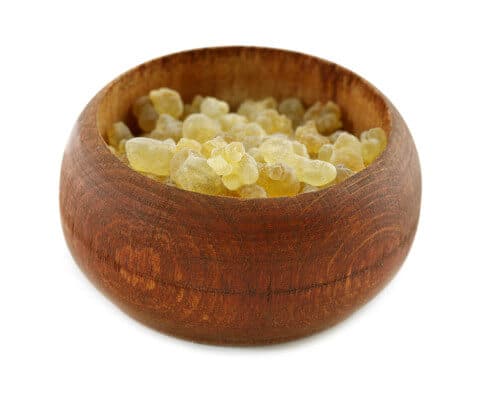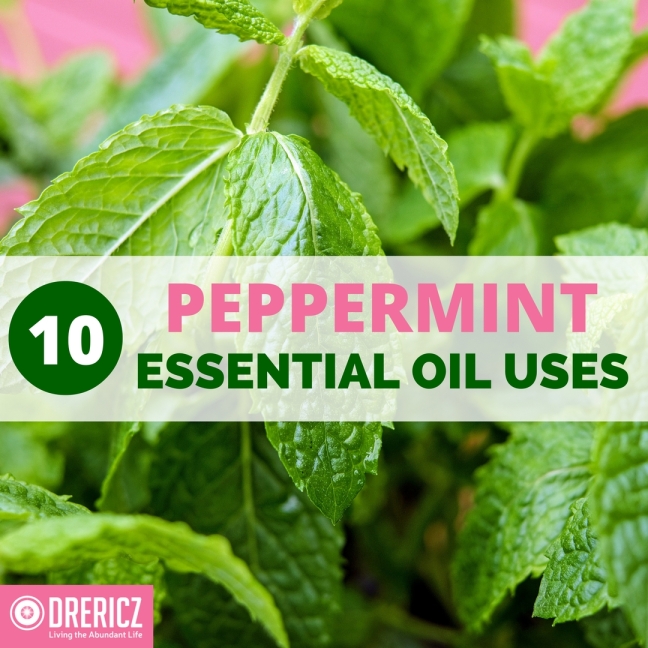
Frankincense oil is used by either inhaling the oil or absorbing it through the skin, usually mixed with a carrier oil, such as an unscented lotion or jojoba oil. It’s believed that the oil transmits messages to the limbic system of the brain, which is known to influence the nervous system. A little bit of oil goes a long way; it should not be ingested in large quantities as it can be toxic.
If you’re purchasing essential oils, avoid oils that say “fragrance oil” or “perfume oil” as these can be synthetic and don’t provide the desired health benefits. Instead, look for oils that say “pure essential oil” or “100% essential oil” for the highest quality essential oils.
Top 8 Frankincense Uses
1. Stress-Relieving Bath Soak
Frankincense oil immediately induces the feeling of peace, relaxation and satisfaction. Add a few drops of frankincense oil to a hot bath for stress relief. You can also add frankincense to an oil diffuser or vaporizer to fight anxiety and for experiencing relaxation in your home all the time. Some people believe that the fragrance of frankincense can increase your intuition and spiritual connection.
2. Natural Household Cleaner
Frankincense oil is an antiseptic, meaning it helps eliminate bacteria and viruses from your home and clean indoor spaces. The plant has been commonly burned to help disinfect an area and is used as a natural deodorizer. Use it in an essential oil diffuser to help reduce indoor pollution and deodorize and disinfect any room or surface in your home.
3. Natural Hygiene Product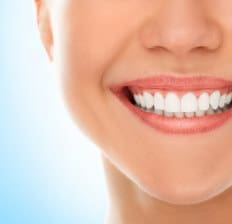
Due to its antiseptic properties, frankincense oil is a great addition to any oral hygiene regimen. Look for natural oral care products that contain frankincense oil, especially if you enjoy the aroma. It can help prevent dental health issues like tooth decay, bad breath, cavities or oral infections. You can also consider making your own toothpaste by mixing frankincense oil with baking soda.
4. Anti-Aging and Wrinkle Fighter
Frankincense essential oil is a powerful astringent, meaning it helps protect skin cells. It can be used to help reduce acne blemishes, the appearance of large pores, prevent wrinkles, and it even helps lift and tighten skin to naturally slow signs of aging. The oil can be used anywhere where the skin becomes saggy, such as the abdomen, jowls or under the eyes. Mix six drops of oil to one ounce of unscented oil and apply it directly to the skin. Be sure to always do a small patch area test first to test for possible allergic reactions.
 5. Relieves Symptoms of Indigestion
5. Relieves Symptoms of Indigestion
If you have any digestive distress, such as gas, constipation, stomach aches, irritable bowel syndrome, PMS or cramps, frankincense oil can help relieve gastrointestinal discomfort. It helps speed up the digestion of food, similar to digestive enzymes. Add one to two drops of oil to eight ounces of water or to a tablespoon of honey for GI relief. If you’re going to ingest it orally, make sure it’s 100 percent pure oil; do not ingest fragrance or perfume oils.
6. Scar, Wound, Stretch Mark or Acne Remedy
Frankincense oil can help with wound healing and may decrease the appearance of scars. It may also help reduce the appearance of dark spots caused from acne blemishes, stretch marks, eczema and help with healing of surgical wounds. Mix two to three drops of oil with an unscented base oil or lotion and apply directly to skin. Be careful not to apply it to broken skin, but it’s fine for skin that’s in the process of healing.
 7. Natural Cold or Flu Medicine
7. Natural Cold or Flu Medicine
Next time you have a respiratory infection from a cold or flu, use frankincense essential oil to help provide relief from coughing. It can help eliminate phlegm in the lungs. It also acts as an anti-inflammatory in the nasal passages, making breathing easier, even for those with allergies or asthma. Add a few drops to a cloth and inhale for the respiratory benefits or use an oil diffuser.
8. Helps Relieve Inflammation and Pain
To improve circulation and lower symptoms of joint pain or muscle pain related to conditions like arthritis, digestive disorders and asthma , try massaging frankincense oil to the painful area or diffusing it in your home. You can add a drop of oil to steaming water and soak a towel in it, then place the towel on your body or over your face to inhale it to decrease muscle aches. Also diffuse several drops in your home, or combine several drops with a carrier oil to massage into your muscles, joints, feet or neck.
Frankincense Essential Oil Benefits
1. Helps Reduce Stress Reactions and Negative Emotions
When inhaled, it’s been shown to reduce heart rate and high blood pressure. It has anti-anxiety and depressio- reducing abilities, but unlike prescription medications it does not have negative side effects and does not cause unwanted drowsiness.
2. Helps Boost Immune System Function and Prevents Illness
Studies have demonstrated that frankincense has immune-enhancing abilities that may help destroy dangerous bacteria, viruses and even cancers. (1) It can be used to prevent germs from forming on the skin, mouth or in your home. This is the reason many people choose to use frankincense to naturally relieve oral health problems; the antiseptic qualities of this oil can help prevent gingivitis, bad breath, cavities, toothaches, mouth sores and other infections from occurring. (2)
3. May Help Fight Cancer or Deal with Chemotherapy Side Effects
Frankincense oil has been shown to help fight cells of specific types of cancer. (3) A 2012 study even found that a chemical compound found in frankincense called AKBA is successful at killing cancer cells that have become resistant to chemotherapy, which may make it a potential natural cancer treatment.
4. Astringent, Kills Harmful Germs and Bacteria
Frankincense is an antiseptic and disinfectant. It has the ability to eliminate cold and flu germs from the home and the body naturally and can be used in place of chemical household cleaners.
5. Heals Skin and Prevents Signs of Aging
Frankincense has the ability to strengthen skin and improve its tone, elasticity, defense mechanisms against bacteria or blemishes, and appearance as someone ages. It helps tone and lift skin, reduces appearance of scars and acne, and heals wounds. It can also be beneficial for fading of stretch marks, surgery scars or marks associated with pregnancy, and for healing dry or cracked skin.
 6. Balances Hormone Levels
6. Balances Hormone Levels
Frankincense oil reduces symptoms associated with menstruation and menopause by balancing hormone levels. It can help relieve pain, cramps, constipation, headaches, anxiety, nausea, fatigue and mood swings. Frankincense oil also helps with regulating estrogen production and reduces the risk of tumor or cyst development in premenopausal women.
7. Eases Digestion
Frankincense helps the digestive system properly detox and to produce bowel movements, reduces pain and cramping in the stomach, can relieve nausea, helps flush out excess water from the abdomen that can cause bloating, and even relieves PMS-related stomach pains. (4) It does this by speeding up the secretion of digestive enzymes, increasing urination production, relaxing the muscles of the digestive tract and also helps improve circulation, which is needed for proper digestive health. It’s been shown to be beneficial in reducing symptoms of leaky gut syndrome, chronic colitis, ulcerative colitis, Crohn’s disease and IBS. (5)
8. Acts as a Sleep Aid
Frankincense essential oil is useful in lowering levels of anxiety or chronic stress that can keep you up at night. It has a calming, grounding scent that can naturally help you to fall asleep. It helps open breathing passages, allows your body to reach an ideal sleeping temperature and can eliminate pain that keeps you up.
9. Helps Decrease Inflammation and Pain
Frankincense can inhibit the production of key inflammatory molecules associated with conditions like arthritis, asthma, painful bowel disorders like IBS and many more conditions. (6) It can be useful in helping prevent the breakdown of the cartilage tissue and has been shown to significantly reduce levels of dangerous and painful inflammation, making it a natural treatment option for pain-related conditions that affect the muscles, joints and tendons.
Frankincense Oil DIY Recipes
Frankincense oil blends well with carrier oils like jojoba oil, coconut oil or shea butter. It can be combined with other essential oils depending on the benefits you’re seeking. For example, it blends well with citrus oils as a “pick-me-up” but also blends well with lavender essential oil as a relaxant. This makes it a versatile and popular oil that lends itself well to many combinations and practical uses. Try one of these recipes to start experiencing the benefits of frankincense oil:
Scar Reducing Body Butter
Total Time: 5 minutes
Serves: 4
INGREDIENTS:
- 2 oounces shea butter or coconut oil
- 10 drops of jasmine oil
- 10 drops frankincense oil
- Small container or jar to mix the ingredients
DIRECTIONS:
- In a double boiler, melt the shea butter until it’s liquid.
- Make sure the oil is not so hot that it will burn you, then add the other oils and stir together to combine. Having the shea butter be room temperature or a little warmer is best.
- You can either smear it on your scar right away, or if you’d like to make it into a shelf-stable cream texture, place the mixture in the fridge until it’s cool for a few minutes, then use a hand mixer on high speed to whip the oils into a white cream.
- Pour into a glass jar or containers, and keep it at room temperature to use whenever you want.
Sleep-Inducing Facial Cream or Body Rub
Total Time: 5 minutes
Serves: 1
This all-natural night cream is great to help you fall asleep. It also doubles as a skin health-booster if you apply it to your face and may be able to help clear up blemishes or breakouts.
INGREDIENTS:
- 5 drops frankincense essential oil
- 5 drops lavender essential oil
- 1/5 tablespoons organic coconut oil
- 1/2 teaspoon olive oil
- Small container or jar to mix the ingredients
DIRECTIONS:
- Use coconut oil that’s not solid but rather soft. If need be, heat it first in a double broiler.
- Add the other oils and stir together to combine. Spread over your face and body. You may want to pat yourself off after to not allow the oil to seep into your bed sheets. You can also store this to use at another time.
Here are a couple more frankincense recipes to try:
Frankincense Interactions/Side Effects
Frankincense essential oil is extremely well-tolerated, especially compared to prescription medications. To date, there are no reported serious side effects of using frankincense oil, as long as you do not ingest large quantities, which can result in it becoming toxic.
Rarely frankincense oil can cause certain reactions for some people, including minor skin rashes and digestive problems like nausea or stomach pains. Frankincense is also known to have blood-thinning effects, so anyone who has problems related to blood clotting should not use frankincense oil or should speak with a doctor first. Otherwise, the oil may have potential to negatively react with certain anticoagulant medications.
Final Thougnts on What Is Frankincense
- Frankincense, sometimes referred to as olibanum, is a common type of essential oil used in aromatherapy that can offer a variety of health benefits, including helping relieve chronic stress and anxiety, reducing pain and inflammation, boosting immunity, and even fighting cancer.
- Frankincense oil uses include stress-relieving bath soak; natural household cleaner; natural hygiene product; anti-aging and wrinkle fighter; relieving the symptoms of indigestion; scar, wound, stretch mark or acne remedy; natural cold or flu medicine; and relieving inflammation and pain.
- It’s a versatile oil that can be combined with several other essential oils and carrier oils, and since frankincense has no known adverse side effects, it’s safe to use and effective.
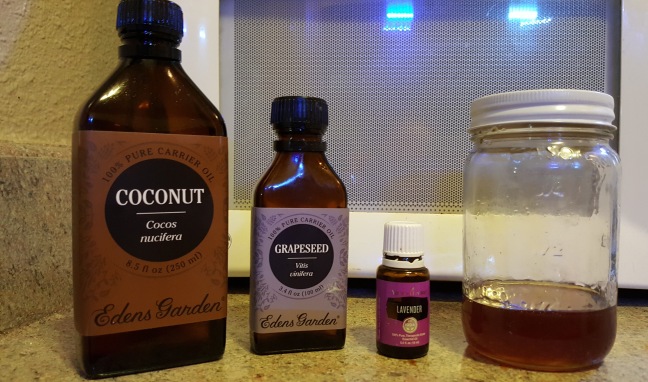

 Some allergy sufferers experience symptoms seasonally, while others are affected year round. Millions of people suffer allergic reactions that range from watery eyes and a runny nose to breaking out in hives. If it seems like you’ve tried every remedy but have yet to find relief, it may be time to give essential oils a try. This natural remedy may not work for everyone, but as we’ve covered in previous articles, essential oils have helped people find relief from stress, digestive problems and skin issues.
Some allergy sufferers experience symptoms seasonally, while others are affected year round. Millions of people suffer allergic reactions that range from watery eyes and a runny nose to breaking out in hives. If it seems like you’ve tried every remedy but have yet to find relief, it may be time to give essential oils a try. This natural remedy may not work for everyone, but as we’ve covered in previous articles, essential oils have helped people find relief from stress, digestive problems and skin issues.
 Food Allergies
Food Allergies
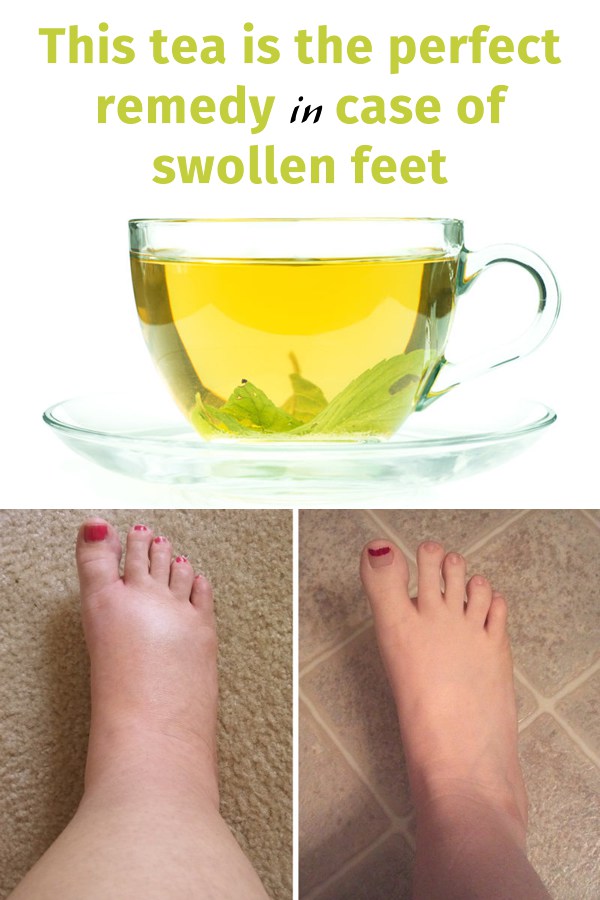



 For the recipe, you’ll need: 2 cups of maple syrup, 6 of water, 2 lemons, ½ kg of red onions and 7 tablespoons of raw honey. Sounds awful right?
For the recipe, you’ll need: 2 cups of maple syrup, 6 of water, 2 lemons, ½ kg of red onions and 7 tablespoons of raw honey. Sounds awful right?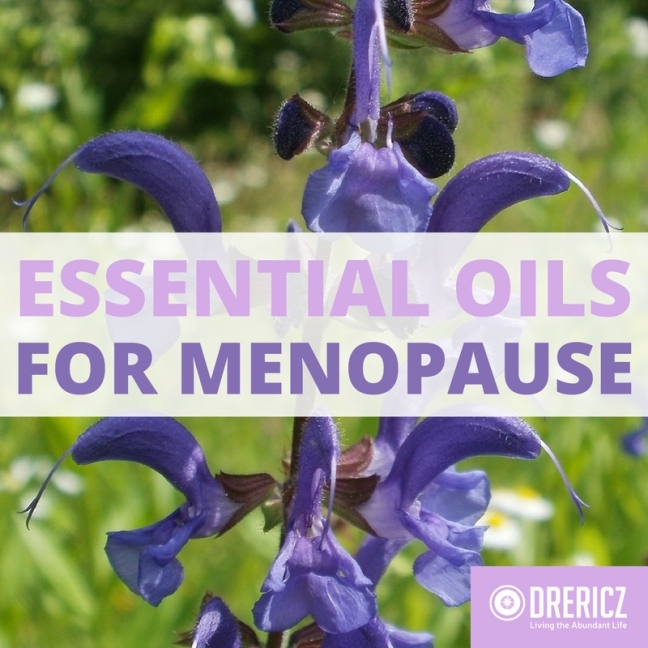




 5. Relieves Symptoms of Indigestion
5. Relieves Symptoms of Indigestion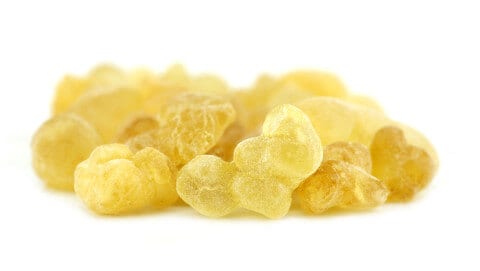

 6. Balances Hormone Levels
6. Balances Hormone Levels
